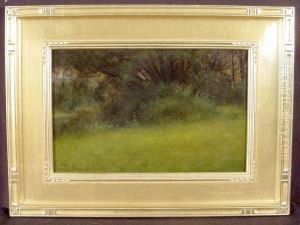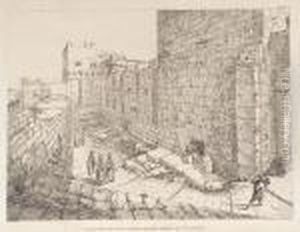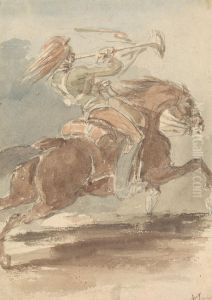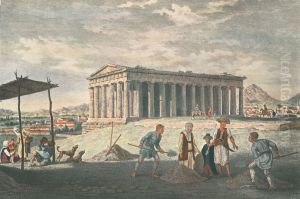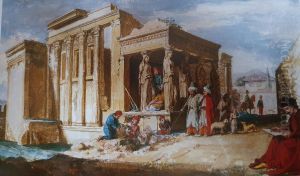James Stuart Paintings
James Stuart, born in 1612 and deceased in 1685, was not primarily known as an artist in the traditional sense but rather as a significant historical figure, specifically as James I of England and VI of Scotland. His reign marked the first instance of the unification of the crowns of England and Scotland under a single monarch, paving the way for the eventual formal union of the two countries into the Kingdom of Great Britain in 1707. James Stuart's contribution to the arts, however, can be seen through his patronage and the cultural flourishing that occurred during his reign.
James Stuart's early life was marked by complexity and intrigue, becoming King of Scotland at just thirteen months old after the forced abdication of his mother, Mary, Queen of Scots. Raised in a Protestant environment despite his mother's Catholic affiliations, his ascent to the English throne in 1603 was seen as a victory for Protestantism, though his reign would be marred by religious and political conflicts, including the infamous Gunpowder Plot of 1605.
Despite these challenges, James I's reign was notable for its contributions to culture and the arts. He was a patron of the arts and literature, most famously commissioning the Authorized King James Version of the Bible in 1611, a monumental work that has had a lasting impact on English literature and language. His court was a center for literary figures, including William Shakespeare, who is believed to have written several of his late plays, such as 'The Tempest,' to be performed at James's court.
Moreover, James Stuart's reign oversaw significant architectural developments and the promotion of artistic endeavors. His sponsorship of the visual arts, although less documented than his literary contributions, played a role in the cultural enrichment of the Jacobean era. His personal interest in theology, philosophy, and the sciences also mirrored the broader intellectual curiosity of the period, contributing to the development of a rich cultural milieu.
In summary, while James Stuart may not have been an artist in the traditional sense of creating visual or literary works himself, his influence and patronage during his reign significantly impacted the cultural and artistic landscape of early 17th-century Britain. His legacy, particularly through the King James Bible, continues to influence the English-speaking world, demonstrating his indirect but profound contribution to the arts and literature.
